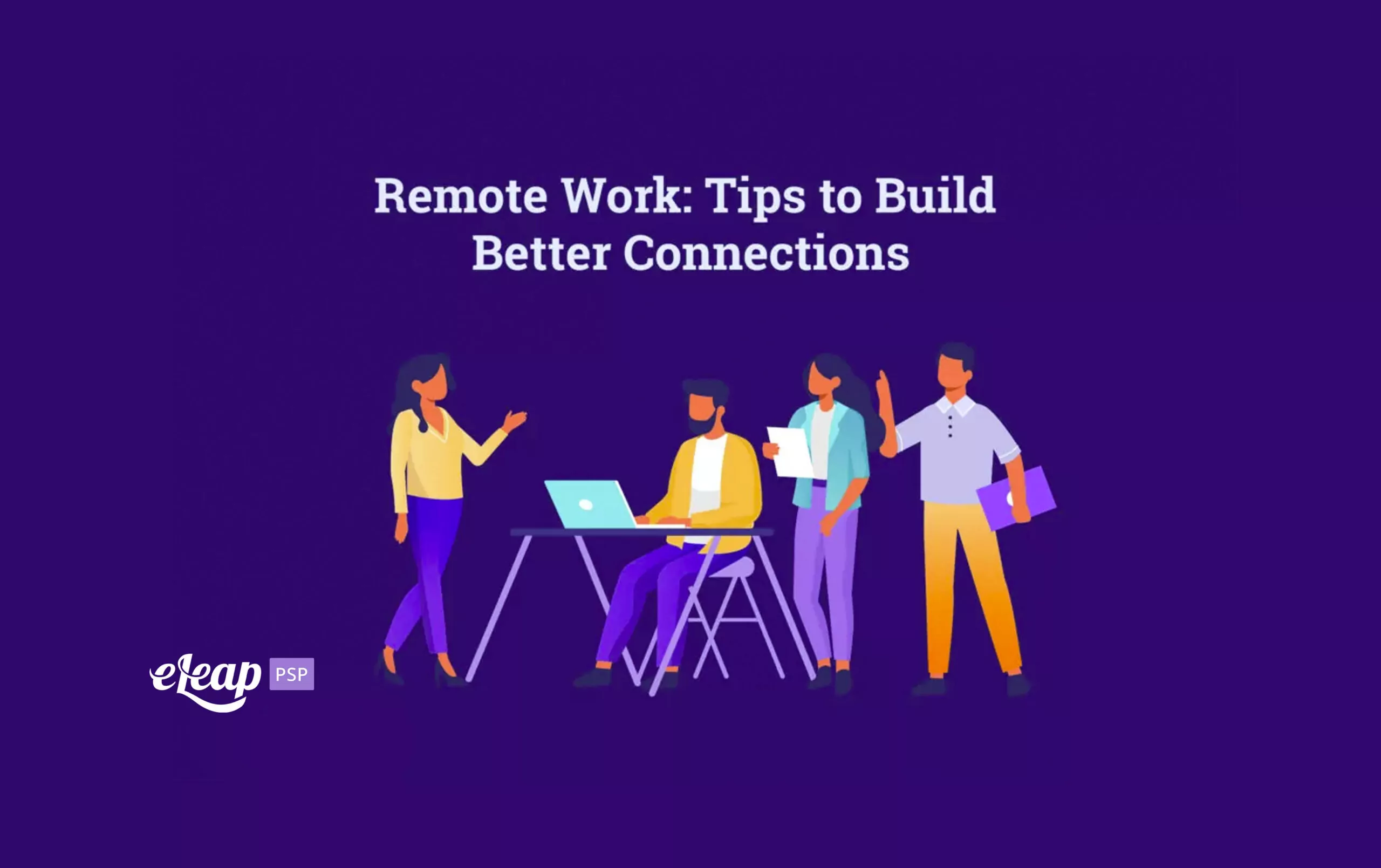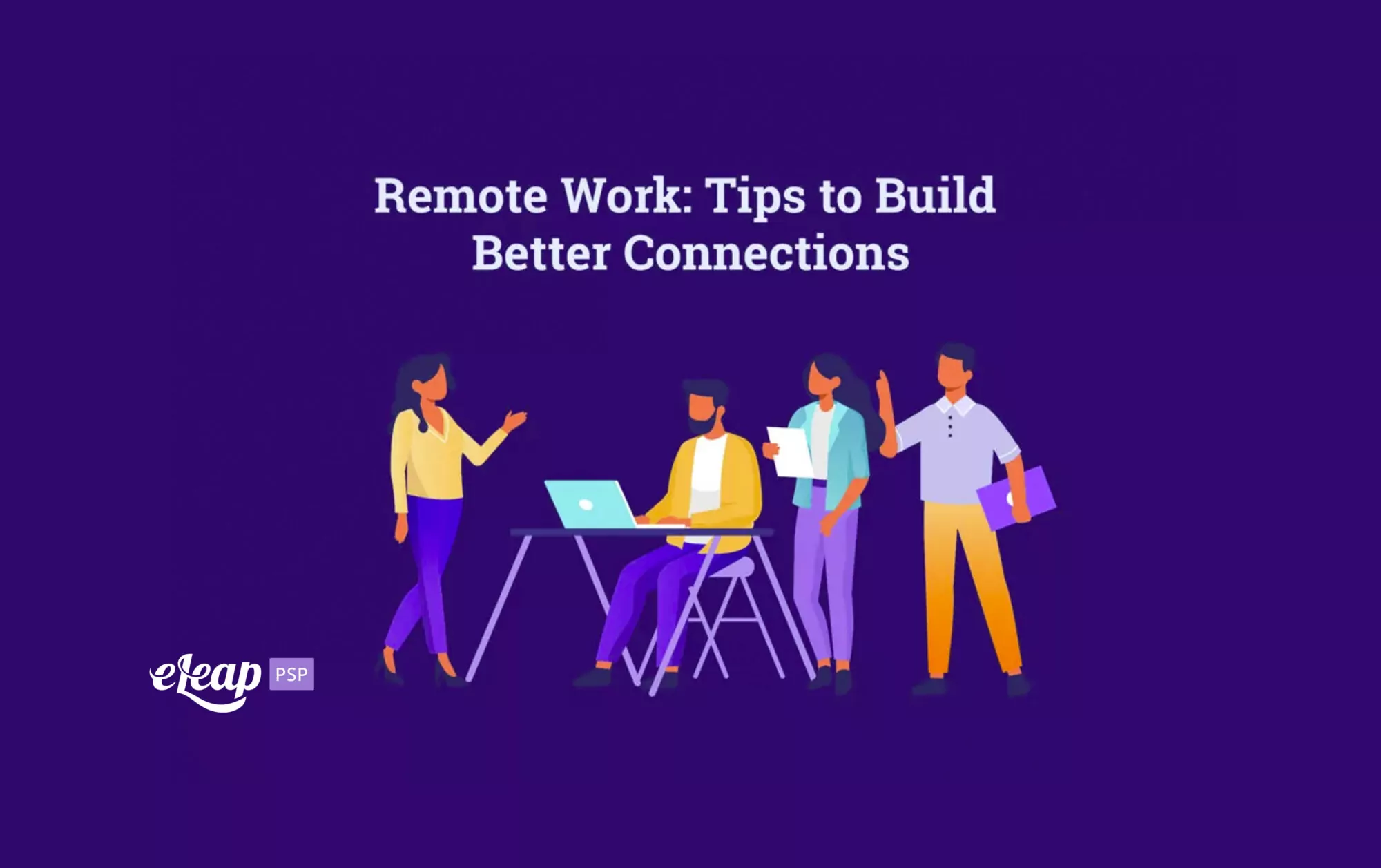Remote Work: Tips to Build Better Connections

Remote work can offer a lot of benefits for both employees and employers. However, it can also be incredibly challenging. It blends work and personal time in often uncomfortable ways. It means that family time can bleed into work time, and vice-versa. It also becomes easy for team members to disconnect from one another, from coaches, and from the organization itself.
Thankfully, there are ways that you can build stronger, more robust connections with your team members. Doing so can help to establish better relationships, help your employees do their best work while also enjoying their personal life, and focus on their well-being. In this post, we’ll discuss several important tips to help you build better connections with your remote teams.

Cut the Isolation
Who do you think performs better – employees who have friends at work, or those who feel isolated and lonely? Yes, those who have friends are more likely to be deeply engaged and feel more appreciated and at home. Those who have few or no connections at work are more likely to feel disconnected and even to jump ship to another employer. After all, financial compensation is only part of what human beings need in a work relationship. We also need to feel engaged, valued, and that we connect with those around us on a deeper level.
So, how do you cut the isolation, particularly in a remote work situation that seems to lend itself to greater isolation, rather than less? The answer could be to encourage your teams to form employee activity groups. What sorts of activities? The sky’s the limit, but some options include:
- After-work happy hour
- Book club
- Group movie watching with a streaming service
- Film club
The point is to get employees with similar interests and hobbies together so that they can form those personal relationships necessary to create a deep sense of engagement.
Show Your Gratitude
Are you grateful for what your employees do? If not, you have a deep-seated, culture-related problem that needs to be addressed first. However, if you do feel grateful but you don’t share that sense of gratitude with them, you could be driving a wedge between them and the organization.
No one wants to work somewhere that they’re not appreciated, where their efforts aren’t valued, and where there’s no gratitude for the results they achieve. You need to take intentional steps to show that gratitude. How might you do that? There are tons of options, but some of them include:
- Having a daily gratitude meeting and highlighting one employee per day and what they do that you’re grateful for. It doesn’t have to be project results-related, either. If someone brightens the room with their cheerful demeanor, highlight that. If someone regularly goes the distance to make others feel better, talk about how grateful you are for that.
- Recognize your team members’ contributions. You can do this formally through some type of award, or you can do it informally during a check-in. Simply saying, “Hey, I really appreciate how you do XXX,” or, “I’m grateful for how you keep the entire team’s spirit up all the time,” can go a very long way.
- Let your team members share praise for each other. This might be through email, through a chat app, virtual suggestions (like names in a hat), or any number of other options. You’ll find that while manager recognition can be greatly valued, most employees put even more value on the opinions of their peers.
Create Some New Traditions
Casual Friday, pizza parties every quarter, or happy hour with the team are all examples of fun workplace traditions. However, in the post-pandemic world, they’ve probably fallen by the wayside. That can affect your team’s connection and level of engagement. The good news is that you can create new traditions, or even translate old traditions into the new remote work world.
Getting together for a virtual happy hour on Zoom after office hours can be a great way to help employees build stronger connections, for instance. Put on a company talent show. Have a weekly show and tell.There are more options than you can imagine. It just requires that you take action. Creating new traditions or retrofitting old ones to fit the new normal can help reignite and strengthen those connections between team members.
Follow an Asynchronous Schedule
One thing that surprises many people is how much normal life intrudes on the workday, even when most of the world is working from home. Feeling that they’re required to be online all the time during normal business hours can lead to frustration for your employees as they struggle to handle things that crop up in their everyday lives.
Instead, shift toward a task-oriented schedule rather than one that follows set hours on the clock. This helps your employees work when it fits their needs best, alleviates frustration, and ensures that they’re able to find a better work/life balance.
Offer Incentives
If you want to build stronger connections with your employees, few things approach what you can do with new incentives. With a little bit of thought, you can find any number of ways that you can offer something of value that wasn’t possible in an office environment. For instance:
- Reimburse employees for hardware costs in setting up their home office.
- Offer gift cards for an essential service.
- Give employees days off to take care of their physical and mental health.
You get the point. Think about what you can do to offer incentives that your people will value and then put it out there. You might be surprised at how much it strengthens connections.
We’re Stronger Together
No matter what industry or niche your organization might occupy, you’re stronger together. By strengthening the connection between employees and between them and the organization, you help build in additional resilience, increase engagement, and go a long way toward helping everyone get through this challenging time.